 We usually show our gratitude to others when we feel indebted to them, when we have benefitted from their actions, and when we want to make our feelings towards them known.
We usually show our gratitude to others when we feel indebted to them, when we have benefitted from their actions, and when we want to make our feelings towards them known.
Showing gratitude is sometimes a required or expected thing, but at other times, a spontaneous “thank you” to someone who has unknowingly made our day. On most occasions, we show gratitude to bring the good feelings we have been gifted back to the gifter.
While it is admirable to want to share our gratitude and good feelings with others, we rarely stop to think about what giving others our gratitude does for us.
As it turns out, it does quite a lot for our brains and mental wellbeing.
Before you continue, we thought you might like to download our three Gratitude Exercises for free. These detailed, science-based exercises will help you or your clients connect to more positive emotions and enjoy the benefits of gratitude.
This Article Contains:
- 13 Most Popular Gratitude Exercises and Activities
- A Gratitude Trick That Marie Forleo Learned from Robert Emmons
- Gratitude Exercise: The Can of Heinz Beans
- 2 Gratitude Quizzes and Questionnaires
- Handy Gratitude Worksheets
- Examples of Gratitude Interventions for Adults
- 4 Gratitude Lesson Ideas for Teachers
- Gratitude Games and Ideas for Kids
- How to Develop Your Own Gratitude Ritual
- Gratitude Apps That Help You Stick to It
- 7 Podcasts Focused on Gratitude
- A Take-Home Message
- References
Research shows that gratitude can (Morin, 2014):
- Help you make friends. One study found that thanking a new acquaintance makes them more likely to seek a more lasting relationship with you.
- Improve your physical health. People who exhibit gratitude report fewer aches and pains, a general feeling of health, more regular exercise, and more frequent checkups with their doctor than those who don’t.
- Improve your psychological health. Grateful people enjoy higher wellbeing and happiness and suffer from reduced symptoms of depression.
- Enhance empathy and reduces aggression. Those who show their gratitude are less likely to seek revenge against others and more likely to behave in a prosocial manner, with sensitivity and empathy.
- Improve your sleep. Practicing gratitude regularly can help you sleep longer and better.
- Enhance your self-esteem. People who are grateful have increased self-esteem, partly due to their ability to appreciate other peoples’ accomplishments.
- Increase in mental strength. Grateful people have an advantage in overcoming trauma and enhanced resilience, helping them to bounce back from highly stressful situations.
With all of these benefits to practicing gratitude, your next question is probably “How do I do it?”
If so, you’re in luck! Read on to discover some of the most popular exercises and activities for this, as well as tips to cultivate your own gratitude practice.
13 Most Popular Gratitude Exercises and Activities
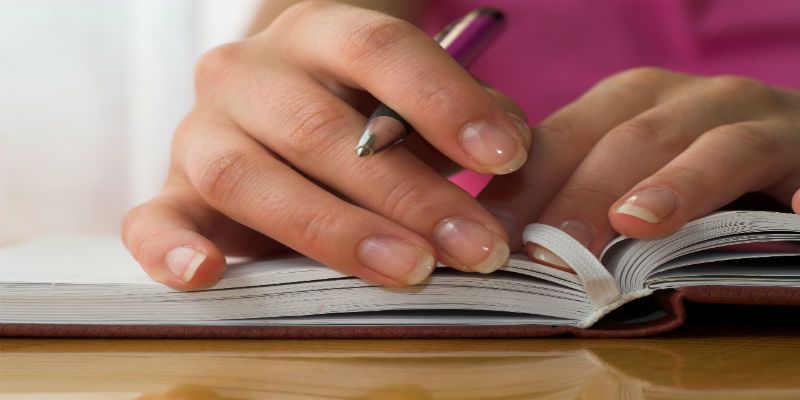
However, it can be tough to get started without practical ideas. These gratitude exercises and activities are some of the most well-known and proven ways to practice and enhance your gratitude.
1. Journaling
Writing down a few things you are grateful for is one of the easiest and most popular exercises available.
The purpose of the exercise is to reflect on the past day, few days, or week, and remember 3-5 things you are especially grateful for. In this way, you are focusing on all the good things that happened to you in a given set of time.
What is the appropriate amount of journaling one should do per week? Some people propose doing it every day while others suggest once per week. The arguments against doing it every day are that it can be tedious and forced. It becomes a practice you feel you should do or need to do instead of something you want to do.
When journaling becomes a banal task and not an enjoyable practice then you need to adjust the amount of journaling you do.
Besides the benefit of focusing on the wonderful things, this practice actually can increase your quality of sleep, decrease symptoms of sickness, and increase joy (Marsh, 2011).
It is important to cater your practice to what you need. Perhaps journaling every day for a short amount of time works for you, but over time, it feels better to journal every Friday.
Paying attention to what you are grateful for becomes easier as you practice it.
Imagine your life without the things or people that matter to you, before you begin writing. That should definitely boost your gratitude barometer.
2. Gratitude Jar
The gratitude jar is a stunningly simple exercise that can have profound effects on your wellbeing and outlook. It only requires a few ingredients: a jar (a box can also work); a ribbon, stickers, glitter, or whatever else you like to decorate the jar; paper and a pen or pencil for writing your gratitude notes; and gratitude!
Step 1: Find a jar or box.
Step 2: Decorate the jar however you wish. You can tie a ribbon around the jar’s neck, put stickers on the sides, use clear glue and glitter to make it sparkle, paint it, keep it simple, or do whatever else you can think of to make it a pleasing sight.
Step 3: This is the most important step, which will be repeated every day. Think of at least three things throughout your day that you are grateful for. It can be something as benign as a coffee at your favorite place, or as grand as the love of your significant other or dear friend. Do this every day, write down what you are grateful for on little slips of paper and fill the jar.
Over time, you will find that you have a jar full of a myriad of reasons to be thankful for what you have and enjoy the life you are living. It also will cultivate a practice of expressing thanks.
If you are ever feeling especially down and need a quick pick-me-up, take a few notes out of the jar to remind yourself of who, and what, is good in your life.
3. Gratitude Rock
This exercise may sound a little silly. You may be thinking, “A rock? How can a rock help me practice gratitude?”
The secret to this exercise is that the rock is a symbol, a physical object you can use, to remind yourself of what you have.
The instructions are about as simple as instructions can be: just find a rock!
Make sure to pick one you like, whether you like it because it’s pretty because it is smooth or has an interesting texture, or because you picked it up from a special place. If you have another small object you’d rather use instead, feel free to substitute that for the rock.
Carry this rock around in your pocket, leave it on your desk where you will see it throughout your day, or even wear it on a chain around your neck or your wrist.
Whenever you see it or touch it, pause to think about at least one thing you are grateful for. Whether it’s something as small as the sun shining down on you in this moment or as large as the job that allows you to feed yourself or your family, just think of one thing that brings you joy or fulfillment.
When you take the stone out of your pocket or off of your body at the end of the day, take a moment to remember the things that you were grateful for throughout the day. When you put it on or in your pocket again in the morning, repeat this process to remember what you were grateful for yesterday.
Not only will this help you remember the things you are grateful for, but also it can trigger a mini-mindfulness moment in your day. It will bring you out of your head and into the present moment, giving you something to focus your attention on. It can also act as a switch to more positive thinking.
When you flip this switch multiple times a day, you will likely find that your average day has become much more positive.
4. Gratitude Tree
The gratitude tree is a great activity for children, and it can also be effective for adults who are open to experiencing a childlike sense of fun and wonder. You will need several double-sided colored sheets of paper, string or ribbon, scissors, twigs or tree branches, some stones or marbles, a vase, and a sense of gratitude.
Step 1: Make one or more leaf cutouts to use as a template for your leaves. Trace leaves on your colored paper.
Step 2: Cut out the leaves, punch a hole at the top of each leaf, and loop your string or ribbon through each hole.
Step 3: Put the stones or marbles in a vase and stick the tree branch or twig in the middle.
Step 4: Have your (or your child) draw or write things that you (or your child) are grateful for on the leaves. You can also use photographs if you’d like.
Step 5: Hang the leaves from the branches, and behold your gratitude tree!
This activity is easy and results in a pretty reminder of the things that bring you or your child joy throughout your daily life. It may be intended for kids but there is no age limit on finding creative ways to cultivate your gratitude, so get to drawing!
Here’s a quick how-to video on the gratitude tree:
5. Gratitude Garden
The gratitude garden activity is a good activity to follow creating gratitude trees. This is also intended for children, but adults can certainly follow along to get into the gratitude spirit.
Follow these steps to journey to the gratitude garden (All Done Monkey, 2012).
- Start the Journey: Stand up in front of the group, with the Thankfulness/Gratitude Tree in clear view. Explain that you are all going on a trip to the Grateful Garden, but to get there you have to go through three dangerous places. (Insert a word other than “dangerous” if more appropriate to the age group). The Thankfulness Tree will help you get through each one so you can make it to the Grateful Garden.
- The Frowny Forest: The first stop is the Frowny Forest. Have the kids all mimic you as you frown, cross your arms, and hunch over. There is a lot of wind in the Frowny Forest, so mimic being tossed about by the wind, turning back and forth as if you are trying to fight it. The only way to leave the Frowny Forest is to feel happy again, so ask the kids to shout out things they are grateful for (using the Thankfulness Tree as a prompt). After they have named a few things, mimic great relief, with a big smile.
- The Sad Swamp: But, oh no! Just beyond the Frowny Forest is the Sad Swamp! Hunch over again, swing your arms down low, and walk (in place) in big, heavy steps, as if walking through mud or water. Again, have the kids shout out things they are grateful for, so you can all leave the Sad Swamp.
- The Mad Mountain: Past the Sad Swamp is the Mad Mountain. Have them imitate you as you pretend to climb up the mountain with great effort, making angry faces. Again, have the kids shout out things they are grateful for, so you can all feel happy again.
- The Grateful Garden: Finally, you have all arrived at the Grateful Garden! What a good job they have done! To celebrate, everyone can do a Happy Hop!
Going through each of these negative emotions can be a fun and interactive learning opportunity for kids. For older children (or young-minded adults!), you can even add in a few other, more complex negative emotions, like the “Disgusted Dock” or the “Petty Pier.”
To read these instructions, click here.
6. Gratitude Box
The gratitude box is a thoughtful way to share your feelings with loved ones and cultivate your own sense of gratitude.
This is another easy activity that requires only a box, some paper, and a pen or pencil to write down gratitude messages. You can make the box yourself or buy one, the prettier the better!
On the paper, write down a heartfelt message of gratitude to your loved one. If you’re not sure how to start, here are some suggestions to begin your message:
1) “Thank you for…”
2) “What I love about you…”
3) “My holiday wish for you…”
You can also collect messages from others about your loved one, to pack the box with multiple messages of gratitude and love.
Place the message(s) into the box, wrap it up or put a bow on it, and give it to your loved one as a special gift, to both your loved one and yourself.
Read more about gratitude boxes here.
7. Gratitude Prompts
Gratitude prompts are a great way to get started, continue your practice, or kick-start a stalled gratitude practice. This is also a relatively simple exercise, with only one instruction: fill in the blank!
These prompts provide several ways to begin a gratitude statement, with infinite possibilities for completion. They cover multiple senses, colors, people, and things. The goal is to identify at least three things in each category that you are thankful for.
The prompts include:
- I’m grateful for three things I hear:
- I’m grateful for three things I see:
- I’m grateful for three things I smell:
- I’m grateful for three things I touch/feel:
- I’m grateful for these three things I taste:
- I’m grateful for these three blue things:
- I’m grateful for these three animals/birds:
- I’m grateful for these three friends:
- I’m grateful for these three teachers:
- I’m grateful for these three family members:
- I’m grateful for these three things in my home:
- I’m grateful for these three people who hired me:
- Etc.
This simple exercise is a great way to identify all the things you are grateful for. To see all of the categories and examples for each category, click here.
8. Gratitude Amble

When you are going through a particularly rough time, try cleansing your mind with a gratitude walk. Just as the combination of meditation and gratitude can combat stress or increase feelings of wellbeing, walking with a gratitude focal point can offer the same remedy.
Walking is therapeutic in itself.
It has health benefits like increased endorphins that decrease stress, increased heart health, and circulation in the body, decreased lethargy, and decreases in blood pressure. Couple this activity with a grateful state of mind and you are bound to nurture a positive mind and body (Rickman 2013).
The goal of the gratitude walk is to observe the things you see around you as you walk. Take it all in. Be aware of nature, the colors of the trees, the sounds the birds make, and the smell of the plants. Notice how your feet feel when you step onto the ground.
The effects are more potent when you can enjoy a gratitude walk with your partner or a friend. In this way, you can show them an appreciation for being able to spend the time walking together.
9. Gratitude Reflection
Reflection is an important part of mindfulness meditation and the cultivation of a sense of self-awareness. These practices can lead to an enhanced sense of wellbeing, among other benefits, although enhanced wellbeing is enough of a benefit for most of us.
To practice gratitude reflection, follow these steps (Still Mind, 2014):
- Settle yourself in a relaxed posture. Take a few deep, calming breaths to relax and center. Let your awareness move to your immediate environment: all the things you can smell, taste, touch, see, hear. Say to yourself: “For this, I am grateful.”
- Next, bring to mind those people in your life to whom you are close: your friends, family, partner…. Say to yourself, “For this, I am grateful.”
- Next, turn your attention onto yourself: you are a unique individual, blessed with imagination, the ability to communicate, to learn from the past and plan for the future, to overcome any pain you may be experiencing. Say to yourself: “For this, I am grateful.”
- Finally, rest in the realization that life is a precious gift. That you have been born into a period of immense prosperity, that you have the gift of health, culture, and access to spiritual teachings. Say to yourself: “For this, I am grateful.”
10. Gratitude Flower
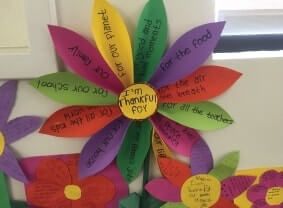
Start by cutting out a circle from colored paper. Yellow is a popular color for this piece since it will be the center of the flower.
On the circle, write “Things I’m Thankful For” or write your name or family name, or even an overarching thing you’re grateful for (i.e., “my family”).
Next, use a template or freehand cut to create flower petals. You can use several different colors for a bright and vibrant flower, or the same color for a more uniform looking flower.
On the flower petals, write down things you are grateful for. These can be things like the sunny weather, having wonderful parents, or a promotion at work.
Glue or tape these petals to the center to create a flower. This is your gratitude flower!
11. Gratitude Letter or Email / Gratitude Visit

Be detailed. Express all the wonderful qualities about this person, and how they personally have affected your life for the better.
If you have the time personally deliver this letter to the person yourself.
Do it unexpectedly. Your level of gratitude should skyrocket, as you observe the bliss the receiver gets from your generous act. It will probably be one of the greatest gifts you will ever receive.
The positive effects of this gratitude exercise were researched and carried out by Kent State professor Steve Toepfer, associate professor in Human Development and Family Studies.
In his 2007 study, his undergraduate students experienced enhanced levels of life satisfaction and happiness, as well as decreased symptoms of depression. Toepfer’s goal of this study was to determine the psychological benefits, if any, for the authors of these gratitude letters (Vincent, 2007).
The results of this study are quite straightforward. If you wish to increase your gratitude and happiness levels then intentionally script letters to inspiring people in your life.
If you are feeling down and maybe even depressed, you should most certainly give this practice a try. For an even further joy boost hand deliver your letter to the receivers so you can witness the receiver’s reactions for yourself.
This activity can be either an email or a letter which you can send off in the mail or deliver personally.
Think about a person who has recently done something good for you, to whom you have not yet expressed your gratitude. This person may be a friend, family member, coworker, teacher, or mentor.
Try to pick someone who you can visit within the next week if you are practicing the visit component.
Next, write them an email or letter. Use these guidelines to write an effective and grateful letter:
- Write as though you are addressing the person directly.
- Don’t worry about getting your grammar or spelling perfect (unless you are sending the email/letter to them).
- Describe what this person has done that makes you grateful, and how they have impacted your life. Be as concrete as possible here.
- Describe what you are doing in life now, and how frequently you remember their act of kindness or generosity.
- Try to keep your letter to about 300 words or so.
If you are writing an email or a letter to be mailed, go through the letter to make sure it is clear and you get the intended message across. Hit the “send” button or drop it in a mailbox.
If you are delivering your letter in person via a gratitude visit, follow these steps:
- Plan a visit with the recipient. Let him or her know you would like to meet with them to share something, but be vague about what you have to share.
- When you meet this person, let them know that you are grateful and that you would like to read them a letter you wrote expressing your gratitude. Ask that he or she does not interrupt you until you are done reading the letter.
- Take your time reading the letter. While you read, pay attention to the reactions of both you and the recipient.
- After you have read the letter, listen to his or her reaction to the letter and be ready to discuss your feelings together.
- Remember to leave the letter with this person when you leave.
If you are located far away from this person, you can arrange a phone call or video chat instead.
12. Meditation

Meditation isn’t always easy especially when the mind is aggressively wandering and distracting your attention, but if you practice this kind of mediation consistently be prepared to experience incredible upgrades in gratitude and joy.
Unlike a normal meditation where intentionally become aware of your breath and keep your mind clear, during a gratitude meditation you visualize all the things in your life that you are grateful for.
It is important to give each person or item the concentration it deserves. You can take the time to go through all the people you are grateful for or all the physical objects you are grateful for.
I like to simplify this sometimes and show gratitude for the things that are often taken for granted: the ability to breath, hands to touch, eyes to see, legs to walk and run, etc. There are numerous advantages to meditating. These advantages magnify when you take the time to target your reasons for gratitude.
Spend some time really taking stock of the things you are grateful for and I am certain you will feel much better afterward. It is a powerful exercise.
13. Collage
This is similar to the gratitude journal, except you are going to take pictures of all the things you are grateful for. This gives you the opportunity to visualize your gratitude.
Try taking a picture of one thing you are grateful for every day for a week. Notice how you feel. Take a look back at the pictures every week. You don’t have to find grandiose things to be grateful for. A simple picture of a flower will do.
The more you do this the easier it will be for you to spot out the things you are grateful for. You will no longer take these simple things for granted.
Perhaps you will document multiple pictures in a day. After a given time period put all your pictures together in a collage and simply be grateful for all that you have.
A Gratitude Trick That Marie Forleo Learned from Robert Emmons
The following video shows the results of a USC study where students kept a gratitude journal for 10 weeks. Watch what happened when the three groups had different prompts—and results.
If one of the three prompts mentioned in the video resonate with you, why not give it a try? If not for 10-weeks, for two weeks? You might be surprised with the slow and steady benefits this simple tip brings.
Gratitude Exercise: The Can of Beans
The following gratitude exercise was invented by Seph Fontane Pennock. For this exercise you’re going to need:
- A can of white beans
- A can opener
- A spoon
Many of us can buy a can of white beans without thinking much, let alone the food many of us are fortunate to put into our bodies. For this exercise, we invite you to have a meal of a can of beans. Nothing else that night. Just the beans.
There’s no warming them up or pouring the beans into a nice cup. That beats the purpose of the exercise. You simply grab a spoon, open up the can, imagine you’re sitting around the campfire at the foot of the Sierra Madra, and dig in.
What is the purpose of the exercise?
The purpose of this gratitude exercise is to realize and appreciate what we have. Appreciation. It can make you realize that every day, you are able to eat all sorts of foods, flown or shipped in from all over the world for you to eat. It is quite extraordinary if you think about it, but it can be easy to take for granted for those who have food security.
During this exercise, you may start to compare the beans that you’re eating with other meals you crave. This allows you to take a moment and appreciate those usual foods, and how they fuel you.
The benefits:
Performing this gratitude exercise once a week:
- Makes you a more mindful eater.
- Makes you appreciate what you have in life, or at least, what you eat.
- Makes you realize that we don’t need so much in order to satisfy our basic human needs.
- Allows you to actually enjoy the ritual and experience positive emotions while your eating beans that tend to last throughout the whole evening.
The most powerful thing about this gratitude exercise is its simplicity. Performing this exercise is easier than its alternative, which means cooking up a whole meal (and ending up with the dishes).
What about your spouse or kids?
In case you are living with someone or if you have kids, you’re going to have more of a challenge in performing this exercise.
You can either explain the exercise to them and invite them to join you if they wish (it’s important that they decide to do so themselves), or do the exercise on one of those evenings that you don’t get to eat together with your family or spouse.
2 Gratitude Quizzes and Questionnaires
Looking for a quick way to assess how grateful you are? These quizzes and questionnaires are readily available on the internet.
- Greater Good at Berkeley Quiz – This 20-item quiz is based on a scale developed by psychologists, Mitchel Adler, and Nancy Fagley. It is available online, and completion will give an overall gratitude score, as well as being given steps on how to promote further gratitude in life.
- This is the GQ-6, a brief questionnaire that may take as little as about 30 seconds to complete. It was devised by Michael E. McCullough, Ph.D., Robert A. Emmons, Ph.D., Jo-Ann Tsang, Ph.D. The GQ-6 gives an impression of how grateful a person is already. It consists of 6 questions, with responses in a Likert-type scale from ‘strongly disagree’ to ‘strongly agree’.
Handy Gratitude Worksheets

Try one of the following worksheets.
Gratitude Exercises
This handout describes several useful gratitude exercises, some of which are included above, in a short paragraph. Consider this your master list of the best gratitude exercises with a quick and easy explanation.
You can find this worksheet here.
To learn about these gratitude exercises in more detail, try the worksheets below.
Gratitude Journal
This worksheet is a quick and easy way to document the things you are grateful for each day. It begins by noting that keeping a journal helps to improve your mood. The worksheet then instructs the user to write at least three entries for each day.
This simple worksheet lists each day of the week with five sections of blank space to fill out with things that make you grateful.Gratitude Journal
Why I’m Grateful Worksheet 
This simple worksheet helps you find things you are grateful for, complete with prompts to get you started. These prompts cover multiple areas of life and dive deeper into your sense of gratitude.
Instead of just helping you identify what you are grateful for, this worksheet digs into why you are grateful.
The prompts include:
- “I am grateful for my family because…”
- “Something good happened this week…”
- “I am grateful for my friendship with… because…”
- “I am grateful for who I am because…”
- “Something silly that I am grateful for…”
- “Something else I am grateful for…”
Simply fill in the blanks on this worksheet to discover more to be grateful for in your life! Click here to use this worksheet.
Gratitude Letter
Produced by Allina Health, this sheet looks at ‘overlooked blessings’ and reflections on positive things about the individual’s health and body, activities they enjoy, and relationships they are grateful for.
Finally, the worksheet prompts individuals to write a gratitude letter.
Daily Gratitude
This worksheet provides a template for a daily gratitude journal, with room to record three things in the last 24 hours the client is thankful for, and three things that they are looking forward to in the next 24 hours.
Gratitude Journal Activity
This provides a gratitude journal activity creating a list of 100 things an individual is grateful for by completing 5 mini-lists, each containing 20 lines. For example, the prompt for the first list is to “list 20 things that you are grateful worked out for you…evidence that the universe is on your side.”
Examples of Gratitude Interventions for Adults
Many of the gratitude exercises described above have been used in interventions to increase gratitude, with varying results. Check out the following studies.
Gratitude as a Psychotherapeutic Intervention
A paper by Robert A. Emmons and Robin Stern (Emmons & Stern, 2013) describes how gratitude can have a positive impact on patients and clients in therapeutic relationships.
The authors also outline several different methods of applying gratitude interventions to adults, including keeping a journal. The article includes a case study of a woman facing severe stress and multiple challenges in her life.
Susanna was suffering from thoughts of leaving her marriage, her husband’s motorcycle accident, the reveal of an extramarital affair on the part of her husband, and finding out that her husband had been hiding a gambling addiction that had nearly bankrupted them.
Susanna’s therapist worked with Susanna to develop a course of treatment that heavily incorporated gratitude. Her therapist encouraged Susanna to reflect on all of the things she had to be grateful for and helped her “self-right” her perspective to truly appreciate each moment in her daily life while building a new life that better suited her strengths, weaknesses, and her circumstances.
This treatment improved Susanna’s ability to function and helped her to remain emotionally available to her children and more self-aware.
The authors end by noting the ways that gratitude interventions differ from most other types of interventions.
First, the prosocial and relational nature of gratitude can build unique pathways to happiness and wellbeing. Gratitude is also a fulfilling practice, facilitating an appreciation of both the current moment and one’s past.
There is much evidence that gratitude interventions result in many positive benefits, and that incorporating gratitude into therapy can help clients and patients realize these benefits.
Using a Gratitude Intervention to Enhance Wellbeing in Older Adults
This study (Killen & Macaskill, 2015) utilized the “three good things” exercise to enhance gratitude in adults 60 years and older. This exercise involves writing down three good things you have to be grateful for each day, generally at night.
The study was conducted on a group of 88 healthy adults aged 60 or over and lasted for 45 days. Results showed that this gratitude intervention improved wellbeing via flourishing, at multiple points throughout the duration of the study. Perceived stress also decreased over the first 15 days.
This intervention was effective whether administered via paper or online and showed that gratitude journaling can have a significant positive effect on older adults.
Gratitude and Wellbeing: The Benefits of Appreciation

The authors describe several studies that have provided evidence of a link between these two constructs.
For example, the authors describe three journaling methods for investigating these effects undertaken by gratitude researchers Emmon and McCullough, including one group that journaled about negative events or hassles in life, one group that journaled about things they were grateful for, and one group that journaled about neutral life events.
The group focusing on things they were grateful for reported significantly higher wellbeing than the other two groups.
Another study pitted a group who completed the “counting one’s blessings” exercise, in which participants wrote about things they were grateful for or for which they felt blessed at the end of each week, against a group who identified challenges or hassles in life and a control group. Those who counted their blessings seemed to experience a boost in wellbeing.
The authors conclude that gratitude can be an effective way to enhance wellbeing, and suggest several exercises that can be used as interventions in therapy, including:
- Journaling about things for which to be grateful.
- Thinking about someone for whom you are grateful.
- Writing and/or sending a letter to someone for whom you are grateful.
- Meditating on gratitude The “count your blessings” exercise.
- Practicing saying “thank you” and really meaning it.
- Writing thank you notes.
- If you are religious, incorporating your gratitude in prayer.
To read about these examples and learn how to measure gratitude, you can read the paper here.
People who regularly practice gratitude experience more positive emotions and less envy, sleep better, extend more compassion and kindness to others, and even have a stronger immune function (Allen, 2018).
Consistent practice is required for neuroplasticity to occur (Kini et al., 2016). Regular gratitude practice works because it slowly changes how we perceive situations by modifying what we focus on (Kini et al., 2016). Rather than constantly focusing on what we do not have, we learn to focus on what we do have.
Here are some ways how you can practice gratitude:
1. Journaling: Reflect and write down three to five things you are grateful for daily, every few days, or every week.
2. Gratitude jar: Write down things you are grateful for on little slips of paper and fill them in a jar. If you need a quick pick-me-up, take a few notes out of the jar to remind yourself of what is good in your life.
3. Gratitude rock: Find a stone you like, carry it with you, and leave it in sight. Whenever you see it or touch it, pause to think about at least one thing you are grateful for.
4. Gratitude walk: Take a walk with the intention of observing the things you see around you. Take it all in. You can even do this together with a loved one.
5. Gratitude letter: Write a hand-written letter to a person you are particularly grateful to have in your life. Be detailed. Express all their beautiful qualities and how they have improved your life.
6. Gratitude meditation: Unlike a regular meditation, where you notice your breath and keep your mind clear, during a gratitude meditation, you visualize all the things in your life that you are grateful for.
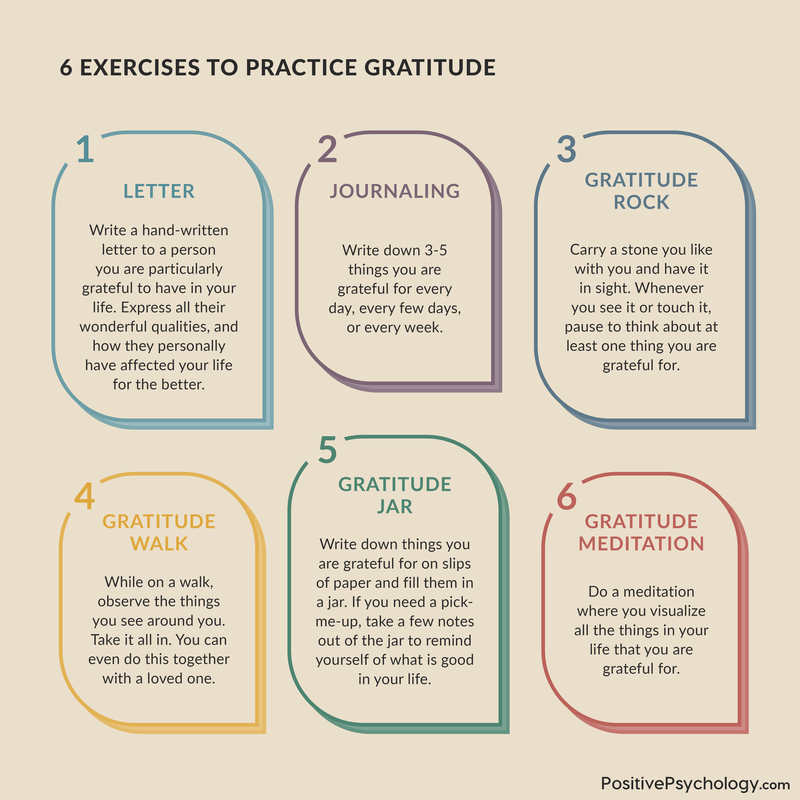
4 Gratitude Lesson Ideas for Teachers
The modern classroom sees teachers educating about far more than literacy and numeracy. Social and emotional learning is now incorporated into the curriculum. Teaching gratitude provides students with powerful life-skills. Here are some resources to utilize in planning gratitude lessons.
1. What is Gratitude?
After an initial ‘activation of thinking’ exercise, brainstorm about gratitude. Then, students can watch a video, such as Gratitude HD, Moving Art on YouTube, and jot down reflections from it on post-it notes. Then, in pairs, students work through guiding questions and the teacher introduces a book that is age-appropriate.
After the story, in pairs, have students discuss what they noticed in the book, what they connected with, and what they are thankful for.
Use photos, calendar images or Visual Talking Cards to provide a starting point for a discussion about gratitude and sharing knowledge among the class. Before closing the lesson, use an ABC Brainstorm Template (available from the link provided below) to generate a list of things students are grateful for.
Find the lesson idea here at its source (Heart-Mind online, 2014).
2. Acts of Kindness (Grades K – 2)
This lesson is designed for students to be given the opportunity to identify ways that they have acted with kindness and caring towards others.
Firstly, provide an explanation to the class about feeling grateful and have a discussion. Then, have the students close their eyes and visualize someone they have been kind to or helped, and to recall how this made them feel as well as what the other person said or did.
Ask students to open their eyes and share what they visualized. Then, ask students to draw a picture of what they visualized and write a caption to go with it. Alternatively, students could write a short paragraph about it.
To extend this lesson, older students could be encouraged to record times when they show kindness to others, the reasons why they did, and how they feel, in a gratitude journal. Or, the class could be prompted to talk about an act of kindness they could do for someone in the school and the teacher can help them put this into action.
3. Food Gratitude (Grades 3 – 5)
The class lists as many different fruits as they can. Then, they vote on which fruit is the favorite fruit for most people in the class.
Guide students through a visualization of all of the people or resources who made it possible for them to enjoy this fruit.
In groups of four, students discuss the visualization and on a large piece of paper, draw all of the people, tools and natural elements necessary to produce the fruit. As students draw, discuss the many people involved in the process of making the fruit available, and prompt the class to think about how they would show gratitude to all of the people—they then add this to the drawing.
The following day, bring in some of the fruit that the students selected (being sure no student is allergic) and ask them to think of all of the properties of the fruit and reflect upon all the people involved in its production.
Finally, before the class enjoys eating the fruit, invite them to recall the expressions of gratitude that they wrote on the drawings and to feel that gratitude.
4. People Who Made a Difference (Grades 6 – 8)
This exercise is designed to help students understand that they can feel gratitude to people whose actions benefit the whole of society and these benefits can last for centuries.
Students identify a historical figure who did something that they feel grateful for. Then, helps students visualize the person, what it would be like to be with them, and the sense of gratitude the student has. Following this, students write an essay looking into what the person did that they were grateful for, and consider the intention and motives of the person.
Students should also think about the ‘cost’ of the figure’s actions, not only in terms of money but more general personal sacrifices. Ask students to reflect upon how they have benefited from the person’s actions and how the whole of society may have benefited.
To conclude the lesson, the class can present brief summaries of the historical figure they researched.
Here are the original sources for Lesson Plans 2-4 above (Zakrzewski, 2016).
Gratitude Games and Ideas for Kids
By now, you’re probably thinking about all the good things that can happen when gratitude is incorporated into one’s life. This is particularly true for children and using gratitude to boost resilience, enhance wellbeing, and encourage a positive outlook on life.
7 Tips for Fostering Gratitude
This piece describes seven ways to encourage the development of gratitude in children.
These tips include:
- Model and teach gratitude. This is the best way to teach any trait you want your child to develop.
- Spend time with your kids and being mindful with them. Quality time is not only a positive experience for both children and adults; it also offers opportunities to model empathy and cultivates a sense of appreciation for the things you love.
- Support your child’s autonomy. Allowing your children to be semi-autonomous helps them to build their strengths and talents, and encourages them to take ownership of their actions.
- Use your children’s strengths to fuel gratitude. Create opportunities for your children to be helpful and cooperative with others, enhancing their ability to feel and express gratitude.
- Help focus and support kids to achieve intrinsic goals. In steering children away from the pursuit of materialistic goals and toward intrinsic goals, you can help children fulfill their own higher-level needs and aid in their development. Savor their accomplishments with them as one way to boost their sense of gratitude even more.
- Encourage children to help others and devote time to nurturing relationships. Volunteer to help others with your child, and encourage them to offer a helping hand to loved ones in need of support. Helping them to develop strong, positive relationships is a great way to make sure they have something to be grateful for.
- Help kids find what matters to them. Assisting your child in finding what he or she is passionate about is a good way to help them find gratitude as well. A sense of purpose or meaning in life helps us all to discover what we love, contribute to society, and practice gratitude.
More information on cultivating a sense of gratitude in children can be found here.
Gratitude in the Classroom

- Create a classroom gratitude book for each child to take home and add a page of pictures and descriptions of what they’re grateful for. Switch out each week so every child has the opportunity to add a page.
- Take a picture of each student holding a large piece of paper with one thing they are grateful for written on it, frame the picture, and send it home as a gift.
- Create a gratitude collage or bulletin board, with pictures of things each student is grateful for.
- Have each child write down something they are thankful for on strips of paper, and use the strips to create a gratitude chain, which can be hung around the classroom.
- Hold a “Special Friends Day” before Thanksgiving, in which each student brings someone special to class. Each pair will write or draw something they are thankful for, which will be posted on a bulletin board.
- Have the children create gratitude surprise sticky notes. Hand these sticky notes out to students and have them write down something they’re grateful for in regards to someone else around the school, then encourage them to “deliver” the note to that person’s locker, mailbox, or classroom door.
For many more classroom gratitude ideas, visit this website.
Gratitude Exercises for Children
The website www.blissfulkids.com also provides popular gratitude exercises that can help develop gratitude in children.
The top three gratitude exercises according to Chris Bergstrom and Blissful Kids are:
1. The Gratitude Journal. Provide your child with a journal and encourage them to write down five things they are grateful for each day. Bedtime is a great time to practice this exercise since children will have the whole day from which to choose what to write about.
2. The ABCs of Gratitude. Have your child sit comfortably and close their eyes. Tell them to list things they are grateful for, beginning with “A” and working all the way through the alphabet to “Z.” Don’t be surprised if this exercise gets a little silly—it’s bound to get silly at some point, so just embrace it and enjoy the laughter with your child!
3. Bedtime Thank Yous. This can be incorporated into the gratitude journal or practiced as a standalone exercise. Help your child to think of happy things that happened to them during their day. They can simply say these things aloud, write them down in their journal, draw a picture of them, or simply think of them. This exercise can ensure that your child drifts off to sleep with a heart full of love and gratitude.
Gratitude: the most powerful practice you’re not doing – Marie Forleo
How to Develop Your Own Gratitude Ritual
Creating a gratitude ritual can be tough, just as starting any new habit can be difficult to stick with at first. Like most other practices, the more you do it, the easier it will get.
Try these tips to help you cultivate a fulfilling and impactful gratitude ritual (Rodrigues, 2017):
- Sit comfortably, close your eyes, and take several slow, deep breaths.
- Think of something good that has happened to you recently.
- Think of a person or animal you love.
- Think of an occasion when you were honored or appreciated by others.
- Think about your present situation and what is going on in your life.
The popular website www.tinybuddha.com also provides several useful suggestions on implementing and sticking to a gratitude ritual.
Their steps are as follows (Russell, 2016):
- Commit to your practice. There will be days when you feel like doing anything other than finding reasons to be grateful, but pushing through these days will empower you and help you build the strength and resilience necessary to push through other challenges.
- Begin your practice. Just do it! Sit down with a pen and paper or a computer and start simply, with a prompt like “I am grateful for…” You may need to sit and think for a while, but that’s okay. If you give it time and put in the effort, it will come!
- Write it down. Sometimes thinking about what you are grateful for will not be enough. Be sure to write down what you are grateful for. Writing can have a powerful impact that just thinking may not bring about.
- Feel it. Allow yourself to fully experience gratitude. Let it come up from your heart and throughout your body. Savor the feeling.
- Choose a set time of day. This can be extremely helpful when starting a practice. Some popular times to practice gratitude are first thing in the morning and last thing at night, but choose a time that works for you.
- Practice present-moment gratitude. While you may be writing these things down at the beginning or end of the day, make sure to notice all of the things for which you are grateful as they pop up throughout your day. Allow yourself to be in the present and to fully appreciate each thing you are grateful for as it arises.
- Share the gratitude. Find a gratitude partner to share your list of things you are grateful for with, to discuss your challenges and your successes with, and to motivate you when you are not feeling up to the task (and vice versa).
- Don’t stop when you start noticing results! Although counterintuitive, it can be tempting to stop any practice once you start seeing the benefits. Make sure you are committed to your practice, whether it feels beneficial in the current moment or not.
- Allow yourself to be human. It’s alright to miss a day once in a while, and it’s alright to feel grumpy about having to follow through on your commitment when it’s the last thing you want to do. We are human, and we will make mistakes. If you’re having trouble coming up with anything, at least write something like “I am grateful I am writing my gratitude list.”
The popular dating website eharmony also provides tips on how to cultivate gratitude, especially in the context of dating and relationships. They suggest four steps (Libby, 2016):
- Breathing. Simply close your eyes and take a deep and intentional breath, repeating until you feel calm and grounded.
- Awakening your awareness. Allow yourself to meditate on your truth in the present moment.
- Recognize your blessings. Think about what you are experiencing with your five senses if you have trouble getting started.
- Emotions flow. Allow your emotions to come and go, to rise and fall as they will. Focus your attention on enjoying the feeling of gratitude working its way through your mind and to your heart.
- Finally, Chris Libby from www.livehappy.com provides four rituals that you can implement to build gratitude in your life.
These rituals are (Libby, 2016):
- Amazing Grace. Reflect on what you are grateful for at the dinner table before you begin eating, whether alone or with your family.
- Focus on the “Haves.” Instead of thinking about what you are missing, think about what you have. Write down at least three things you are grateful for each night.
- The Write Stuff. Write a letter to someone you are grateful to or for, and read the letter aloud to them if possible. you can find more instructions for this exercise earlier in this piece.
- Thankful Awareness. Try something new and fulfilling, such as volunteering at a food bank or soup kitchen, or handing out toys at a children’s hospital. Witnessing the trials and challenges of others can often be a spur for you to notice the good things in your own life.
Gratitude Apps That Help You Stick to It
Sometimes, even when we know all of the right steps and have all of the right tips, practicing regular gratitude can be difficult. This is where an app can help! Try one of the gratitude apps described below to help you keep a regular gratitude practice.
1. Gratitude Journal

This app is available through iTunes here.
2. Gratitude Garden App

You can also receive gratitude cards, which contain suggestions for further actions that can increase gratitude and happiness.
This app is free, and you can download it on iTunes here.
3. Grateful: A Gratitude Journal

Available here from iTunes.
4. Happyfeed

The more you use this app, the more valuable it becomes.
Head here to get the app.
6 Podcasts Focused on Gratitude
Podcasts are a convenient way to hear from experts, and can also be a good use of time such as when on public transport. There are some available on the topic of gratitude. Here they are…
- The Gratitude Podcast is by Georgian Benta. It is devoted to all things gratitude, with over 500, 000 downloads. It includes interviews with successful people and getting them to share fascinating stories about how gratitude has helped them get to where they are now.
- Episode 18 of the ‘Being Well’ podcast sees Dr Hanson and Forrest discuss the 5th of 12 strengths to be examined in the series – gratitude. They look at the role of positive emotions generally and especially the value of “thankfulness”.
- This podcast, “Why Gratitude Works” is by Christine Carter and Rona Renner. In it, these experts discuss the science of gratitude and the reasons why consciously practicing gratitude can improve people’s happiness so markedly.
- Featuring acclaimed author and grounded theory researcher, Brene Brown, the topic of this podcast is “On gratitude, vulnerability, and courage”. When gratitude and the power of appreciating the smallest moments were discussed, the podcast became emotional.
- This relatively short podcast, featuring Lewis Howes from the School of Greatness, looks at developing an ‘attitude of gratitude’. Howes shares both expertise and personal experience – such as almost losing his father in a car accident, and how he learned not to take things for granted.
- This podcast is slightly different to the others discussed above. It looks at gratitude as a skill, and how to build this skill. There is a lot covered in the podcast. If you don’t have the time, or the inclination, to listen to a podcast a summary of the points covered is available on the site which is accessible from the hyperlink provided.
A Take-Home Message
I hope you have found this piece useful. I’m grateful for you, as a reader, who took the time to process some of these ideas.
The “gratitude muscle” is like any other muscle, in that it must be flexed periodically to remain strong.
Return to this page whenever you need a reminder about why gratitude is important to practice, or suggestions on how to boost your own sense of gratitude. Visit the section on developing gratitude in children to encourage your own children, clients, or students to commit to a lifetime of gratitude and happiness.
Thank you for reading, and please be sure to find at least three things to be grateful for today.
Do you have a regular gratitude practice? Are there other gratitude exercises that work for you? Please let us know in the comments section below.
We love hearing from you!
We hope you enjoyed reading this article. Don’t forget to download our three Gratitude Exercises for free.
For further reading, we suggest:
- All Done Monkey. (2012, November 2). Journey to the Gratitude Garden: Activity for Thanksgiving. Retrieved from http://alldonemonkey.com/2012/11/02/journey-to-the-gratitude-garden-activity-for-thanksgiving/.
- Allen, S. (2018). The science of gratitude. John Templeton Foundation.
- Emmons, R. A., & Stern, R. (2013). Gratitude as a psychotherapeutic intervention. Journal of Clinical Psychology, 69, 846-855.
- Killen, A., & Macaskill, A. (2015). Using a gratitude intervention to enhance well-being in older adults. Journal of Happiness Studies, 16, 947-964.
- Kini, P., Wong, J., McInnis, S., Gabana, N., & Brown, J. W. (2016). The effects of gratitude expression on neural activity. NeuroImage, 128, 1-10.
- Libby, C. (2016, September 30). 4 gratitude rituals to build kindness and increase joy. Live Happy. Retrieved from http://www.livehappy.com/practice/4-gratitude-rituals-build-kindness-and-increase-joy.
- Marsh, J. (17 November 2011). Tips for keeping a gratitude journal. Greater Good Science Center.
- Morin, A. (2014, November 23). 7 scientifically proven benefits of gratitude that will motivate you to give thanks year-round. Forbes. Retrieved from https://www.forbes.com/sites/amymorin/2014/11/23/7-scientifically-proven-benefits-of-gratitude-that-will-motivate-you-to-give-thanks-year-round/#5173c7f5183c.
- Rickman, C. (9 November 2013). Walking into well-being: The power of the gratitude walk. Huffington Post.
- Rodrigues, C. (2017, January 8). Creating a gratitude ritual. Retrieved from www.everydaygaan.com.
- Russell, H. (2016). How to start a gratitude practice to change your life. Tiny Buddha. Retrieved from http://tinybuddha.com/blog/how-to-start-a-gratitude-practice-to-change-your-life/.
- Sansone, R. A., & Sansone, L. (2010). Gratitude and well being: The benefits of appreciation. Psychiatry (Edgemont), 7(11), 18-22.
- Still Mind. (2014). Try this gratitude meditation, you’ll feel wonderful. Retrieved from www.stillmind.org/gratitude-meditation/.
- Vincent, E. (2014). Writing power: Kent state professor studies benefits of writing gratitude letters. Kent State University.
- http://www.therapistaid.com/.
- http://greatergood.berkeley.edu/.
Let us know your thoughts
Read other articles by their category
- Body & Brain (49)
- Coaching & Application (57)
- Compassion (26)
- Counseling (51)
- Emotional Intelligence (24)
- Gratitude (18)
- Grief & Bereavement (21)
- Happiness & SWB (40)
- Meaning & Values (26)
- Meditation (20)
- Mindfulness (45)
- Motivation & Goals (45)
- Optimism & Mindset (34)
- Positive CBT (28)
- Positive Communication (20)
- Positive Education (47)
- Positive Emotions (32)
- Positive Leadership (18)
- Positive Parenting (4)
- Positive Psychology (33)
- Positive Workplace (37)
- Productivity (16)
- Relationships (46)
- Resilience & Coping (36)
- Self Awareness (21)
- Self Esteem (37)
- Strengths & Virtues (31)
- Stress & Burnout Prevention (34)
- Theory & Books (46)
- Therapy Exercises (37)
- Types of Therapy (64)
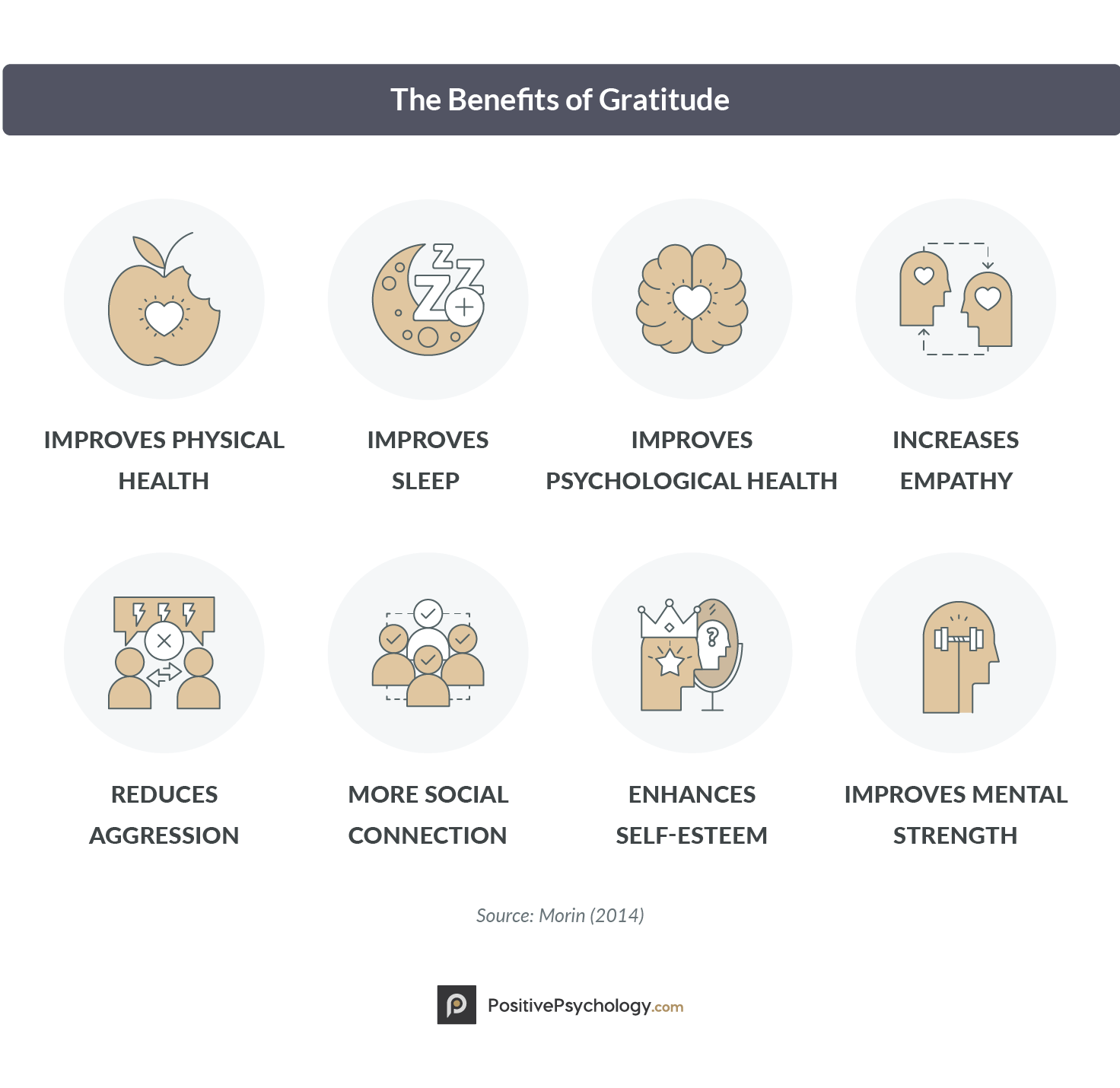
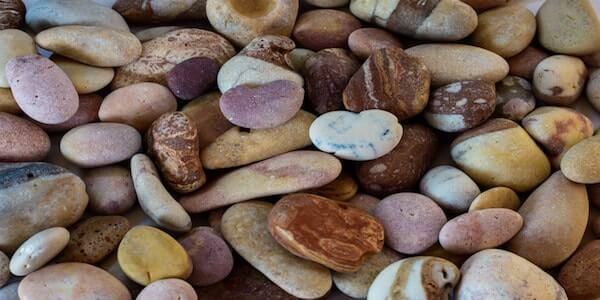

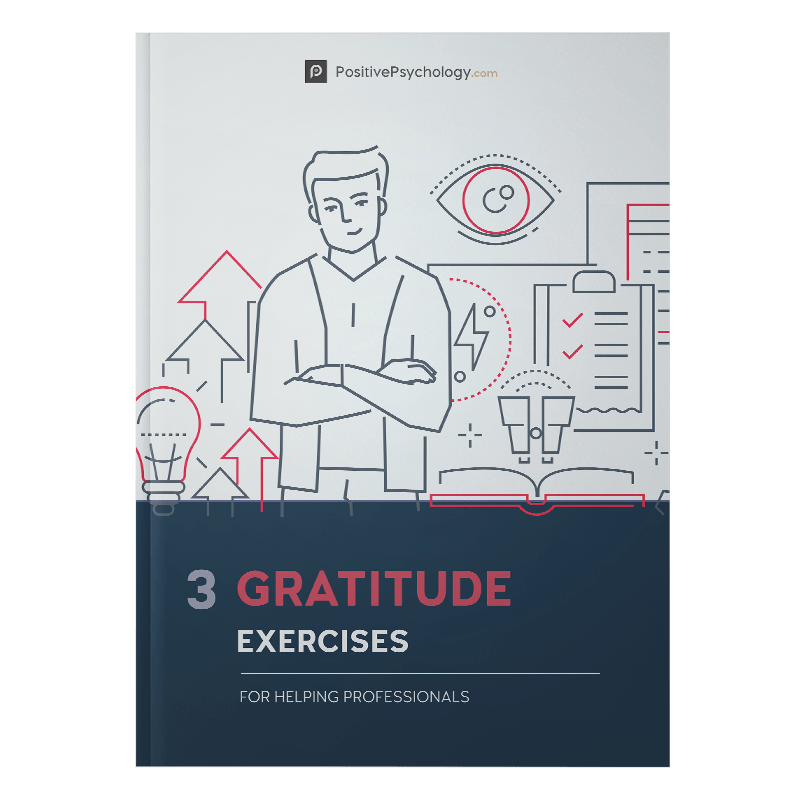
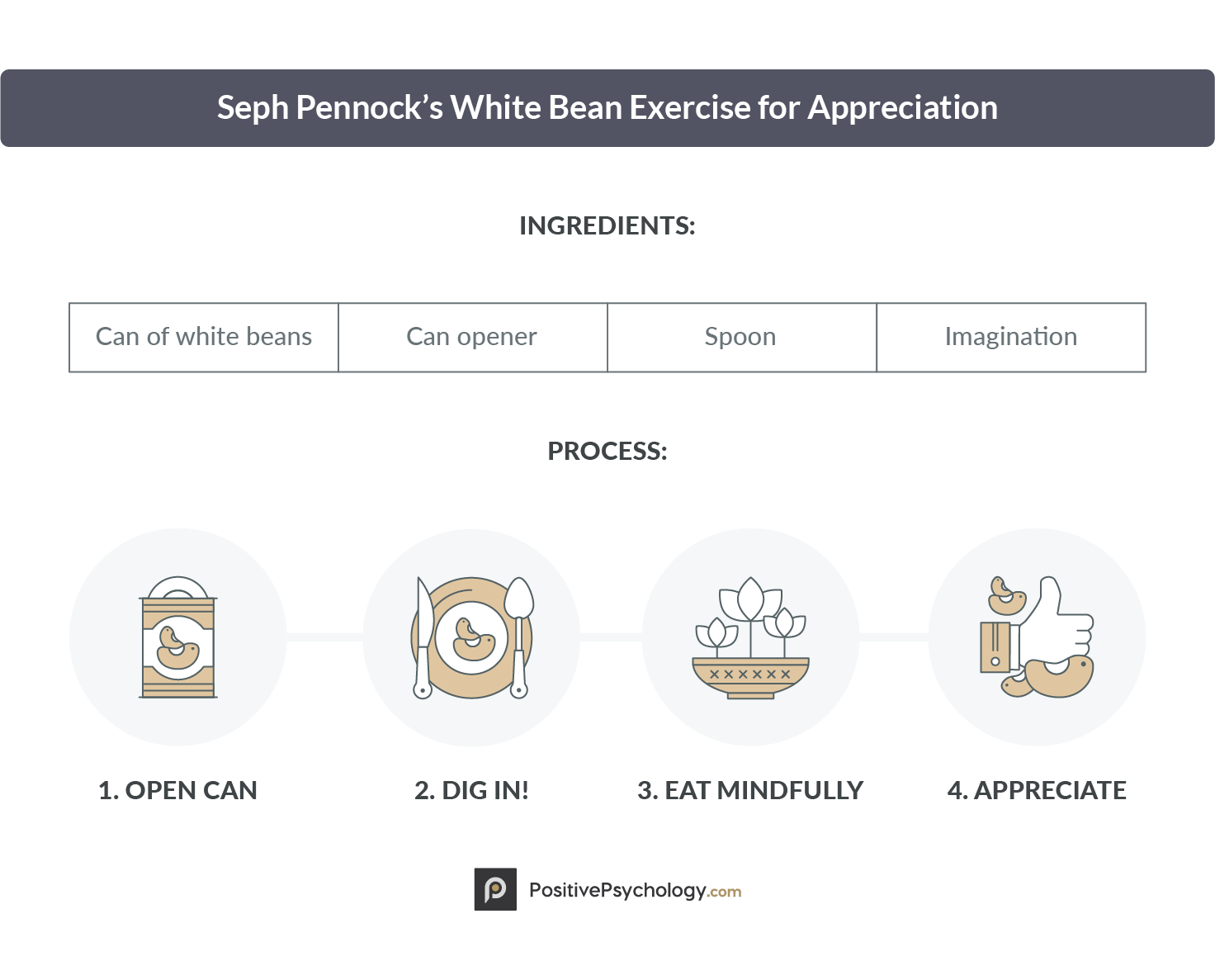
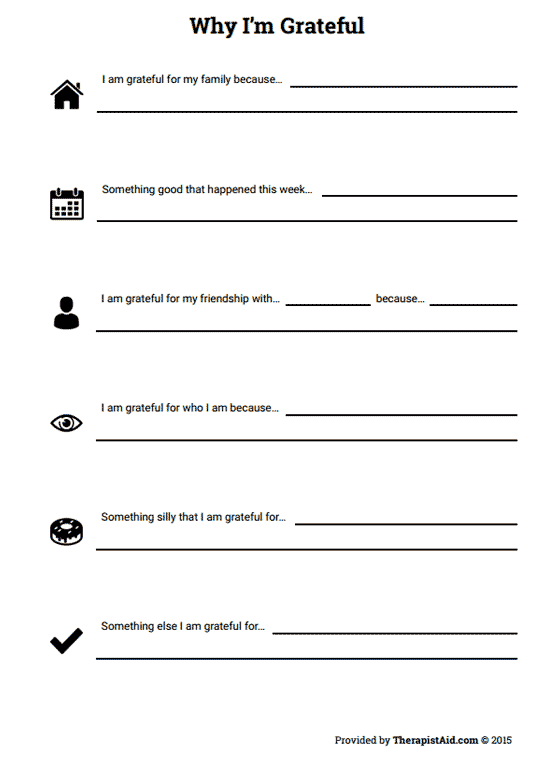

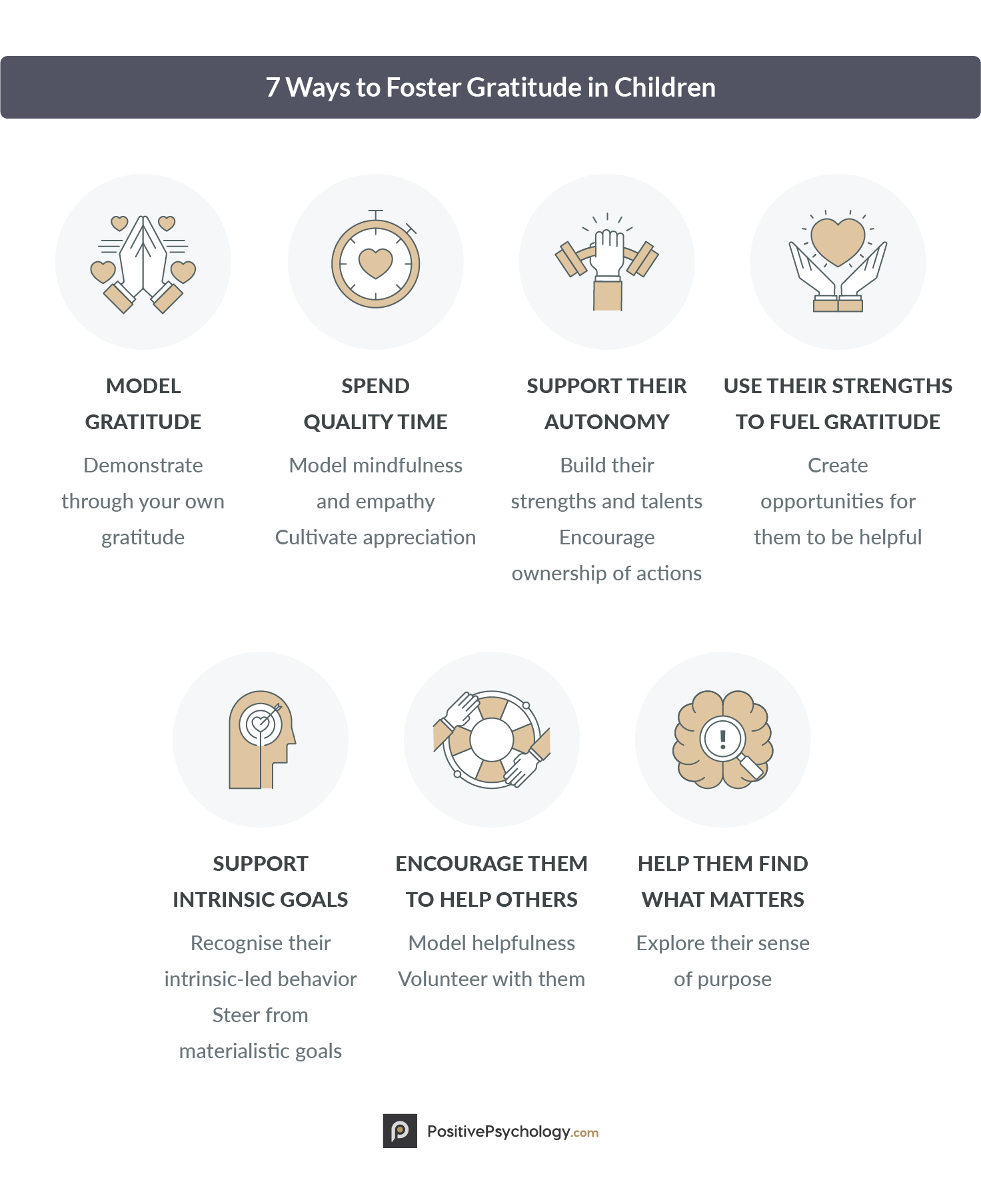
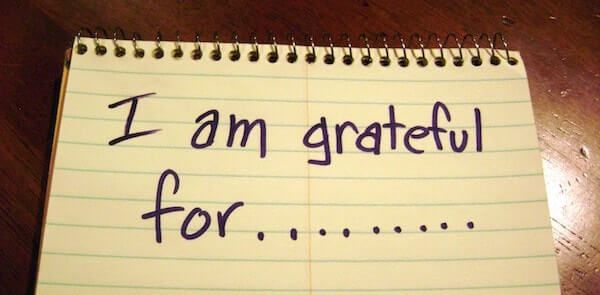
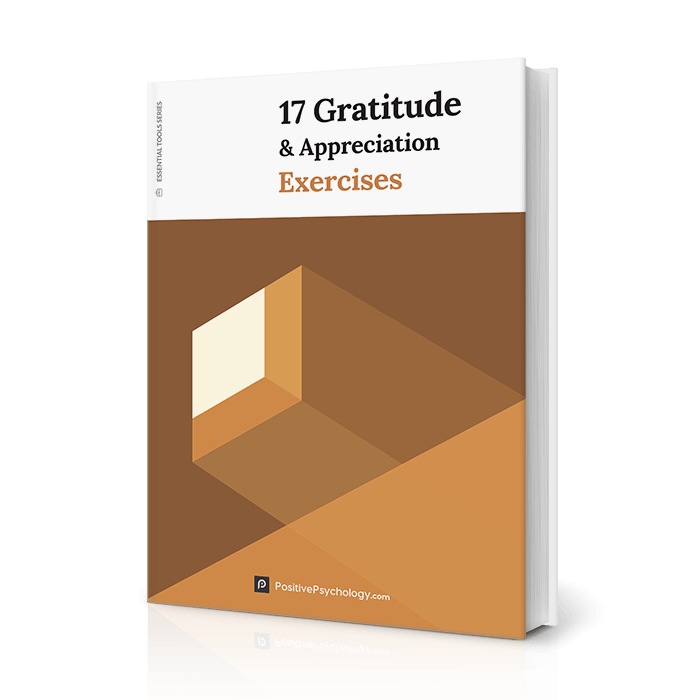
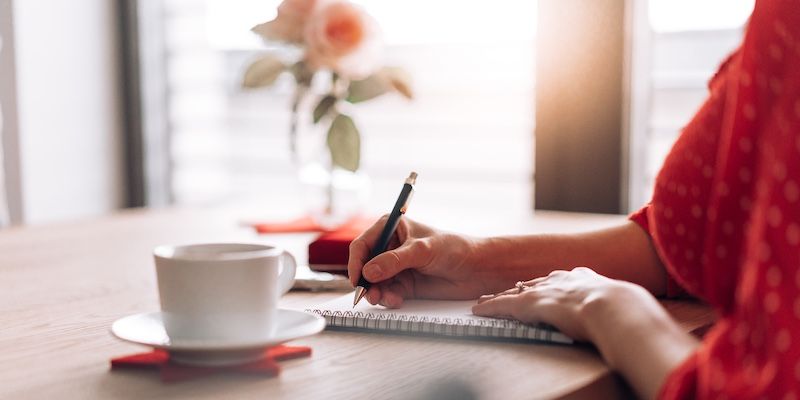


What our readers think
Who would of thought that one day we would need gratitude apps to remind us how to be appreciative. But here we are.
My sincere thanks to the team who shared with us this innovative piece. It is amazing to learn and realize how a small exercise of gratitude would uplift the mood and once soul altogether.
Excellent post and a great ideas for teaching gratitude. We’re a homeschooling family ourselves that place a strong emphasis on teaching gratitude.
In addition to using wall mural gratitude trees, we developed this game to help teach gratitude in case you’d like to share: https://naturallygrateful.com/gratitude-attitude-game/
I keep a gratitude diary on my calendar of what I’m grateful to God for. As the month or months progress if I’m feeling down I go through it & realize just how much He has done for me & how God & Jesus Christ helped me find comfort. I know this is a psychology based site but in addiction rehab they talk about a higher power.So now you know how I cope daily @ times or monthly.
Thank you so much! This has everything I need for my Gratitude practice and more!! Love it, I have book marked it and will be visiting here often…
Hi Sreeja,
Glad you found the exercises useful. We have more exercises in the form of journaling prompts available in this post if you are interested.
Best of luck with your gratitude practice!
– Nicole | Community Manager
Valuable info. Lucky me I found your web site by accident, and I am shocked why this accident didn’t happened earlier! I bookmarked it.
He wouldn’t talk to me so I got worse with him. I would say nasty thing to via the internet. I got so annoyed with last we for send heaps of picture message.
this guy has heaps of women on his list and I wonder is he doing the same thing to them. I hate been ignored. I like to talk things out. He doesn’t want to at all.
He has a alcohol problem as well. But he won”t admitted it at all.
He is well educated in Economic and Fianance Risk Management.
I won’t to know how to deal with my anger problems toward or other people in my life. Where can I get some help on this ?
Hi, this is a great post. Thank you for sharing.
Thank you for all the ideas and resources. I am excited to listen to the gratitude podcasts.
One thing I share with my clients is to give themselves a break. When I first started consciously practicing gratitude, I thought I had to be grateful and happy every minute of the day. Not so. It’s perfectly normal to experience both positive and negative emotions. The more I consciously look for what I am grateful for, the easier it is to shift the “negative” emotions.
When I was a high school teacher, my students were required to write down 20 things they were grateful for that were unique to the month. At first, they thought I lost my mind. Slowly but surely, many of them saw the benefits. In June of 2017, I left the classroom to grow the Living in GRATITUDE Today Movement. Now, I speak about gratitude all over the country.